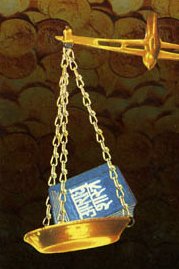Shukranitisara, Shukra-nitisara, Śukranītisāra: 4 definitions
Introduction:
Shukranitisara means something in Hinduism, Sanskrit. If you want to know the exact meaning, history, etymology or English translation of this term then check out the descriptions on this page. Add your comment or reference to a book if you want to contribute to this summary article.
The Sanskrit term Śukranītisāra can be transliterated into English as Sukranitisara or Shukranitisara, using the IAST transliteration scheme (?).
In Hinduism
Arthashastra (politics and welfare)
Source: archive.org: Studies in Kautilya VocabularyŚukranītisāra (शुक्रनीतिसार) is the name of a work on ethics by Śukrācārya.—The science of government and political ethics have been elaborately dealt here in all four chapters which are named simultaneously as:
- rājakṛtyakathana, i.e., the duties and responsibilities of a king,
- yuvarājādikṛtyakathana, i.e., the duties of the royal princes and the like,
- sādhāraṇanītiśāstrakathana, i.e., general statements regarding the political and moral standard of the people,
- and miśraprakaraṇakathana, a chapter of mixed type.
The first chapter which consists of three hundred eighty six verses speaks at the end that it is only a summary of the statement of different duties and responsibilities of the kings and elaboration will be made later on.
Source: Shodhganga: Rajadharma in the MahabharataŚukranītisāra (शुक्रनीतिसार).—Śukrācārya delivers the essence or spirit of Brahmā’s nītiśāstra, which is known as Śukranītisāra. It is divided into four chapters and named as
- rājakṛtya-kathana,
- yuvarājādikṛtya-kathana,
- sādhāraṇanītiśāstra-kathana,
- miśraprakaraṇa-kathana.
Śukra gives more importance on nīti. He states that the whole world is established by these nīti, without the nīti or the system of morals, no man can be established, like wise without food a man cannot survive.
Source: Knowledge Traditions & Practices of India: Indian Ethics: Individual and SocialŚukranītisara (शुक्रनीतिसर) or simply Nītisara is the name of a text dealing with ethics and ethical values (nītiśāstra), attributed to Śukrācārya. Śukra Nītisara is an abridged Sanskrit text on polity which is attributed to Śukrācārya but believed by scholars to be a work of the early medieval period of history.

Arthashastra (अर्थशास्त्र, arthaśāstra) literature concerns itself with the teachings (shastra) of economic prosperity (artha) statecraft, politics and military tactics. The term arthashastra refers to both the name of these scientific teachings, as well as the name of a Sanskrit work included in such literature. This book was written (3rd century BCE) by by Kautilya, who flourished in the 4th century BCE.
General definition (in Hinduism)
Source: Google Books: Boot, Hooves and WheelsThe Śukranītisāra (शुक्रनीतिसार) was named after the mythical Śukrācārya, a sage renowned for realpolitik, practical diplomacy, and policies bordering on the fiendish, and better known as counsel to the ungodly Asura.
See also (Relevant definitions)
Partial matches: Shukra, Nitisara.
Full-text (+28): Shukra, Lekhaka, Rinalekhya, Vyadhana, Ajnapatra, Bhagalekhya, Danapatra, Samvitpatra, Kshemapatra, Jayapatra, Prajnapatra, Krayanalekhya, Sammatipatra, Ayadhana, Paricaraka, Vittadhipati, Mantrika, Shasanapatra, Prasadapatra, Bhogapatra.
Relevant text
Search found 9 books and stories containing Shukranitisara, Shukra-nitisara, Śukranītisāra, Sukranitisara, Sukra-nitisara, Śukra-nītisāra; (plurals include: Shukranitisaras, nitisaras, Śukranītisāras, Sukranitisaras, nītisāras). You can also click to the full overview containing English textual excerpts. Below are direct links for the most relevant articles:
Nitiprakasika (Critical Analysis) (by S. Anusha)
Author of the Nītiprakāśikā < [Chapter 2]
Cosmetics, Costumes and Ornaments in Ancient India (by Remadevi. O.)
3.2. Dress Making: Stitching or Sewing < [Chapter 2 - Costumes]
3.7. Dress Making: Dyeing < [Chapter 2 - Costumes]
3.1. Dress Making: Spinning and Weaving < [Chapter 2 - Costumes]
The Matsya Purana (critical study) (by Kushal Kalita)
Part 5 - The king and his Council (pariṣad) < [Chapter 6 - Polity in the Matsyapurāṇa]
Samarangana-sutradhara (Summary) (by D. N. Shukla)
Vastu-shastra (1): Canons of Architecture (by D. N. Shukla)
(v,11) Vāstu in the Śilpa-texts < [Chapter 4 - An outline History of Hindu Architecture]
(iv) Other Ācāryas (chief preceptors) of Vastuśāstra < [Chapter 4 - An outline History of Hindu Architecture]
Kashyapa Shilpa-shastra (study) (by K. Vidyuta)
2 (a). Literary Evidence to Art-Activity < [Chapter 1 - Introduction]
Related products
